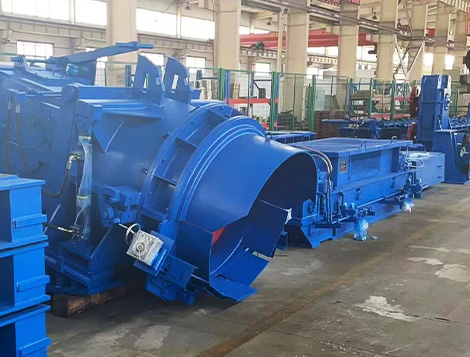Understanding Steel Rolling Mill Plant Cost
Le coût de l'usine de laminage d'acier is a critical consideration for manufacturers aiming to establish or upgrade their production lines. This cost encompasses machinery procurement, installation, consommation d'énergie, labor, and maintenance. With global demand for high-quality steel products rising, optimizing these expenses while ensuring operational efficiency is paramount.
Key Factors Affecting Steel Rolling Mill Plant Cost
1. Equipment Selection: The type of rolling mill machinery (par ex., laminoirs à chaud, laminoirs à froid) directly impacts the initial investment. Par exemple, HANI TECH composants de laminoir à chaud are engineered for durability, reducing long-term replacement costs.
2. Efficacité énergétique: Modern mills integrate energy-saving technologies, such as HANI TECH’s induction heating systems, which lower power consumption by up to 30%.
3. Maintenance Requirements: Regular upkeep of rolling mill rolls, gears, and hydraulic systems minimizes downtime. HANI TECH offers wear-resistant spare parts, extending equipment lifespan.
4. Niveau d'automatisation: Automated control systems improve precision but may increase upfront costs.
5. Raw Material Costs: Fluctuations in steel billet prices affect overall profitability.
HANI TECH’s Solutions for Cost Optimization
Systèmes de laminoirs à chaud
HANI TECH est spécialisé dans hot rolling mill plants designed for high throughput and low operational costs. Their modular systems allow scalable investments, ideal for both small-scale and large-scale producers. Key features include:
- Advanced temperature control systems for consistent product quality.
- Customizable roll configurations to handle diverse steel grades.
- Integrated cooling beds to reduce post-rolling processing time.
Metallurgical Furnace Technology
Complementing rolling mills, HANI TECH fours à fusion enhance metallurgical efficiency. Their medium-frequency induction furnaces achieve 95% thermal efficiency, significantly lowering energy costs compared to traditional blast furnaces.
Technical Parameters of Rolling Mill Equipment
Below is a detailed comparison of critical parameters for hot rolling mill components and auxiliary systems:
| Équipement | Capacité (TPH) | Pouvoir (kW) | Diamètre du rouleau (mm) | Épaisseur du matériau (mm) | Plage de température (°C) | Tolérance (mm) | Cycle d'entretien (heures) |
|---|---|---|---|---|---|---|---|
| Hot Rolling Mill Stand | 50-200 | 1500-5000 | 600-1200 | 1.2-25 | 900-1250 | ±0,1 | 2000 |
| Four à induction | 5-50 | 800-3000 | – | – | 1200-1600 | ±5 | 5000 |
| Refroidissement | 30-150 | 75-250 | – | – | Ambient-200 | ±2 | 10,000 |
Additional Parameters
| Composant | Matériel | Dureté (CRH) | Max Speed (MS) | Type de lubrification | Expected Lifespan (années) |
|---|---|---|---|---|---|
| Rouleaux de travail | High-Cr Steel | 58-62 | 12-25 | Oil-Air | 3-5 |
| Gearbox | Acier allié | 32-36 | N / A | Grease | 10-15 |
Reducing Operational Costs in Steel Rolling Mills
To minimize coût de l'usine de laminage d'acier over the lifecycle, consider these strategies:
- Maintenance prédictive: Use IoT sensors to monitor equipment health and schedule timely repairs.
- Energy Recovery Systems: Capture waste heat from furnaces to preheat billets, reducing fuel consumption.
- Training Programs: Skilled operators reduce material waste and equipment misuse.
Tendances futures de la technologie des laminoirs
Emerging technologies like AI-driven process optimization and hydrogen-based heating systems promise to revolutionize coût de l'usine de laminage d'acier structures. Le R de HANI TECH&D team is actively developing hybrid furnaces that combine induction and arc heating, aiming to cut energy expenses by 40% par 2030.
En conclusion, managing coût de l'usine de laminage d'acier requires a holistic approach combining advanced machinery, energy-efficient practices, and strategic partnerships with suppliers like HANI TECH. By leveraging their expertise in solutions de laminoirs à chaud et technologie du four de fusion, manufacturers can achieve both economic and technical sustainability.




